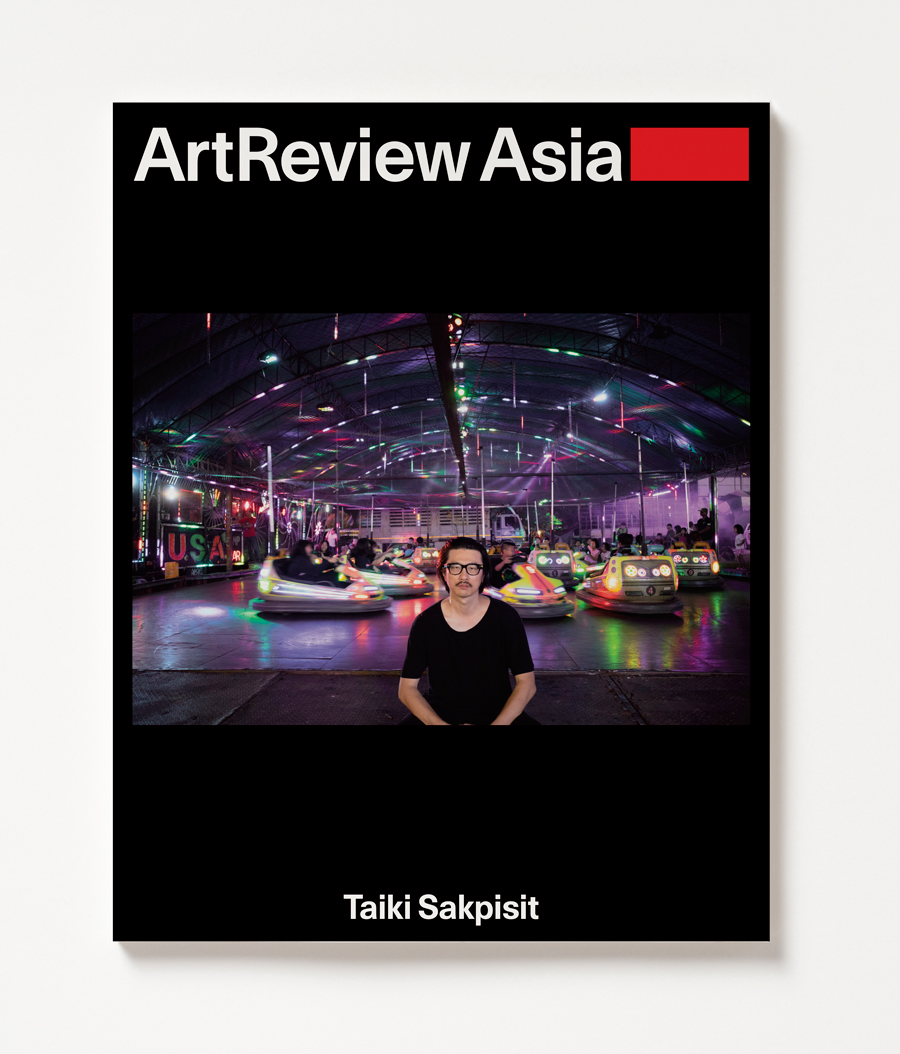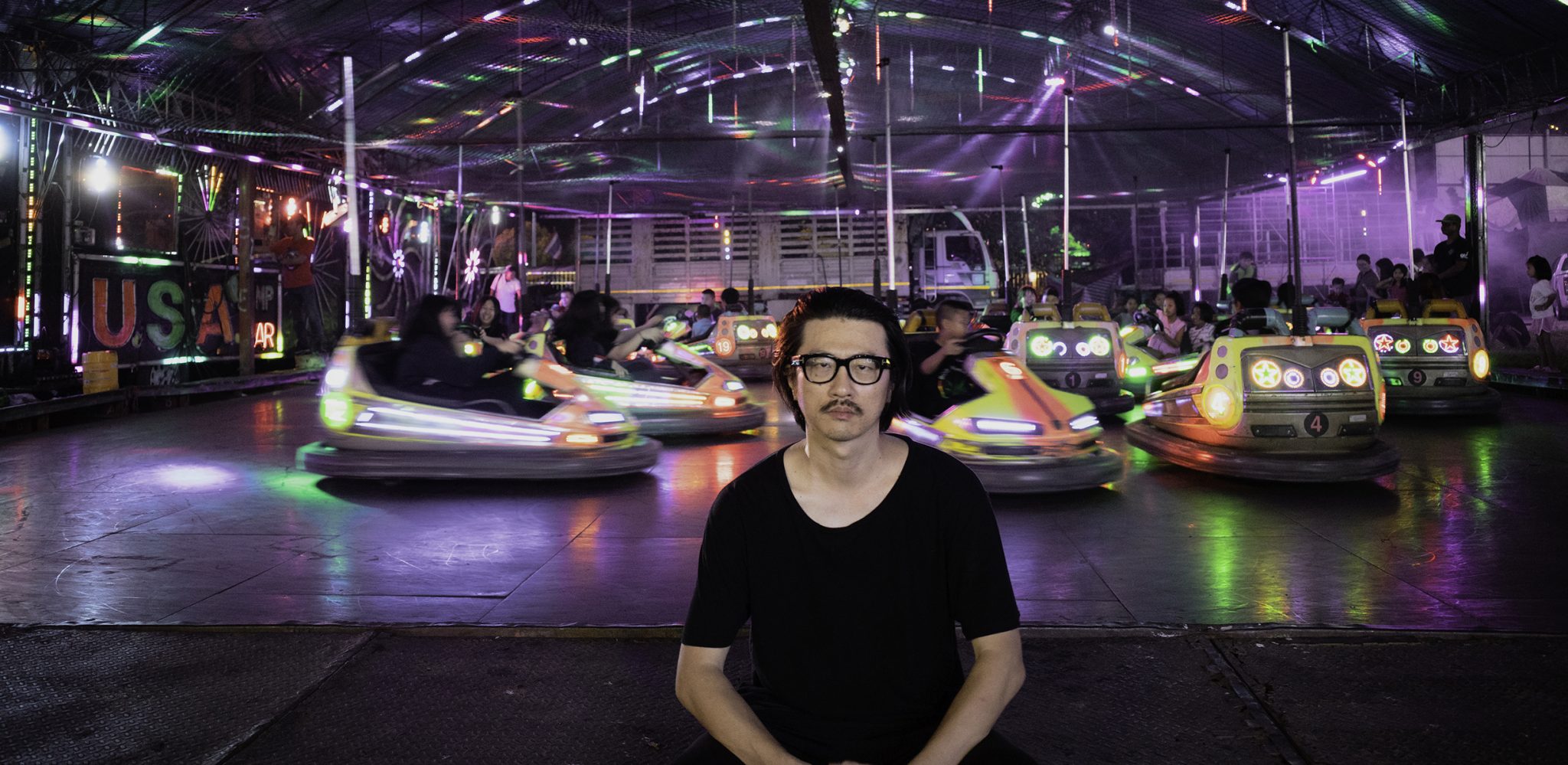Featuring Taiki Sakpisit, Shirin Neshat, Cian Dayrit, Haneda Sumiko and the Yolngu/Macassan Project

The Winter issue of ArtReview Asia is out now, focusing on the relationships between power and geography, and a variety of artists whose works tackle issues of tradition through nuanced subversions of cultural and political positions.
Bangkok-based filmmaker Taiki Sakpisit uses the techniques and history of cinema to unpack Thailand’s troubled past, using those to embed a resounding, but subtly expressed, political commitment in his experimental films. Max Crosbie-Jones looks at Sakpisit’s subjects which range from dysfunctional families, the afterlife, psychological and historical trauma to the reinvention of history. ‘Edited using a formalist approach that favours technical aspects – particularly the sound-image tension and the rhythmic possibilities of montage – over and above any guiding sense of narrative, the resulting images are often as evocative as they are everyday, drawing our attention to the splendour of the ordinary,’ he writes.
Meanwhile, Neha Kale looks back to the ruptured relationship between the Aboriginal Yolngu people of Australia’s Northern Territory and their cultural interactions with Sulawesi’s (now modern-day Indonesia) Macassan fisherpeople almost two centuries before they had contact with invaders from Europe. Europeans who cut short those interactions at the beginning of the twentieth century, when they denied the Macassans’ fishing permits, while both the Yolngu and the Macassans preserved them in their cultural artefacts and inherited traditions. Ahead of the 10th Asia Pacific Triennial, at which works by Yolngu and Macassan artists will be on show, including bark paintings with Macassan references and a collection of ceramic pots made in Macassar and painted by Yolngu, Kale examines ‘a country shaped entirely by European settlement, a myth that erases 60,000 years of continuous Indigenous occupation, and one that also bypasses the histories of migration that have left their mark on this continent.’
Also in the issue…
Ren Scateni looks back at the output of pioneering documentary filmmaker Haneda Sumiko and her equally subtle negotiations of urban and rural life in postwar Japan. Long neglected in the West, Sumiko is one of Japan’s most prolific and important documentary filmmakers who created poetic works attuned to the cycles of rural life, colonial history and the roles of women in society.
Meanwhile, Cian Dayrit, whose work will be on show as part of next year’s Biennale of Sydney, uses ‘counter-cartography’ in the form of large handsewn maps that subvert normal cartographic power structures to reframe the ideals of history and heritage in his native Philippines. ‘Through community engagement, Dayrit and his collaborators – craftsmen and local community members – piece together overlooked spatial, temporal and personal narratives of the oppressed via multimedia artworks and installations,’ writes Marv Recinto, who traces the artist’s body of work from art installations to campaigns against extrajudicial killings and demonstrations for agrarian reform.
Similar subjects of history and heritage haunt Shirin Neshat’s latest body of work, Land of Dreams, which focuses on her position as an ‘American immigrant’ and the possibilities and restrictions that identity offers in relation to her upbringing in Iran. Speaking to Fi Churchman, Neshat discusses how her work interrogates the relationship between where we are and who we are, and the restrictions on how those two things are expressed.
Also in this issue:
Deepa Bhasthi comments on the many mansions built by migrant workers that are left empty in Kerala; Ross Chen questions the future of Hong Kong cinema; and Max Crosbie-Jones wonders why so few recent Thai dramas make it beyond the conventions and cliches of TV shows of the past. And last but not least book reviews and exhibitions reviews from cities around the world.
***Click here to subscribe***
